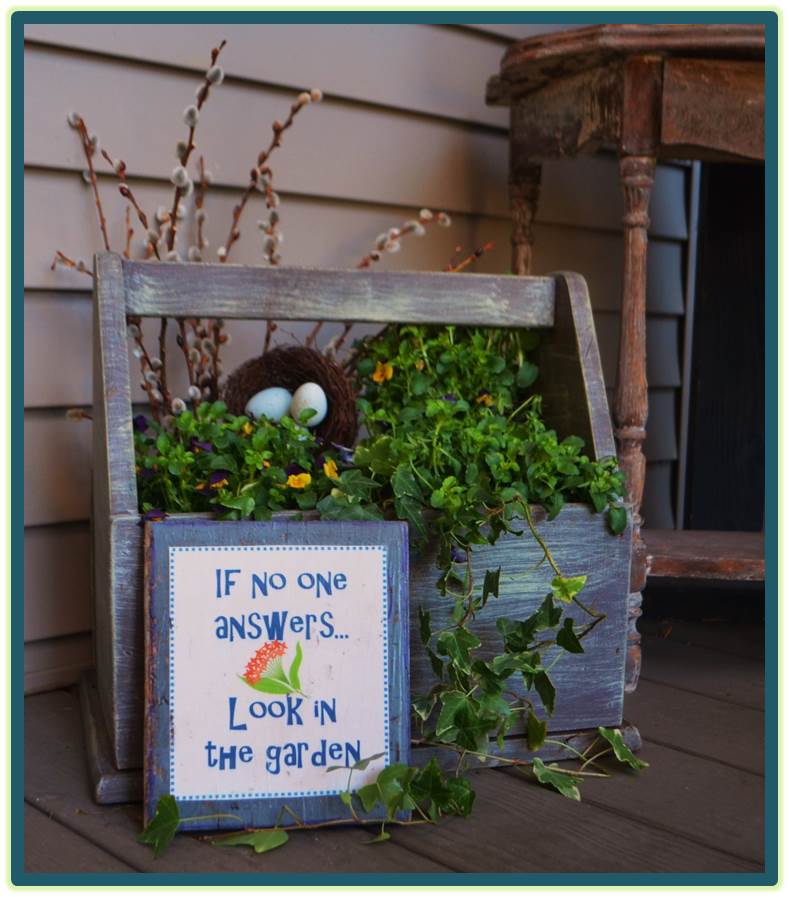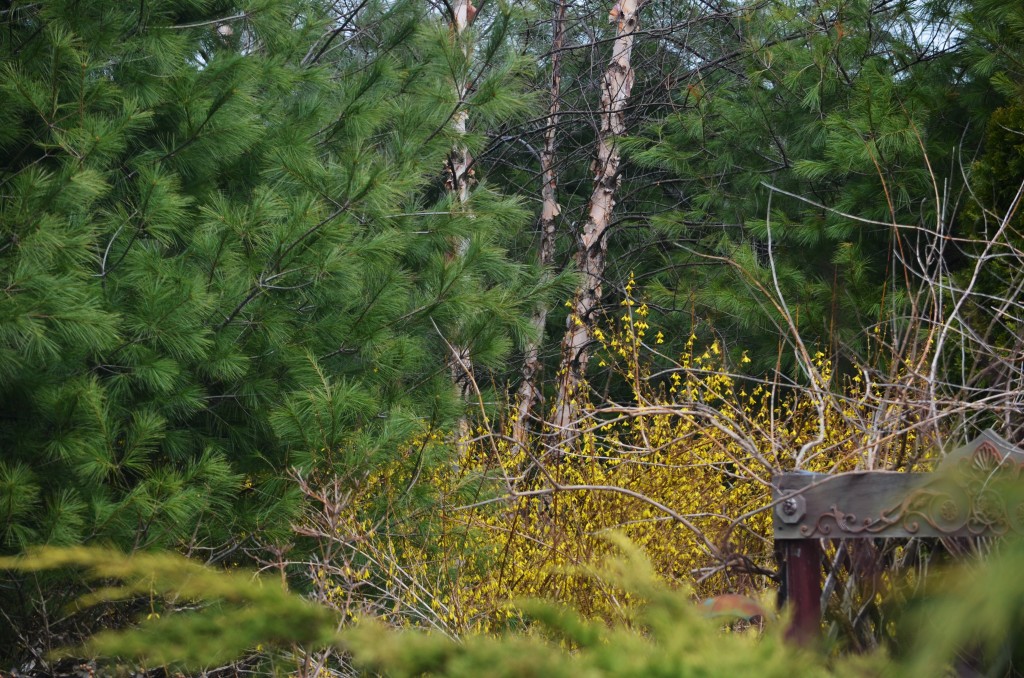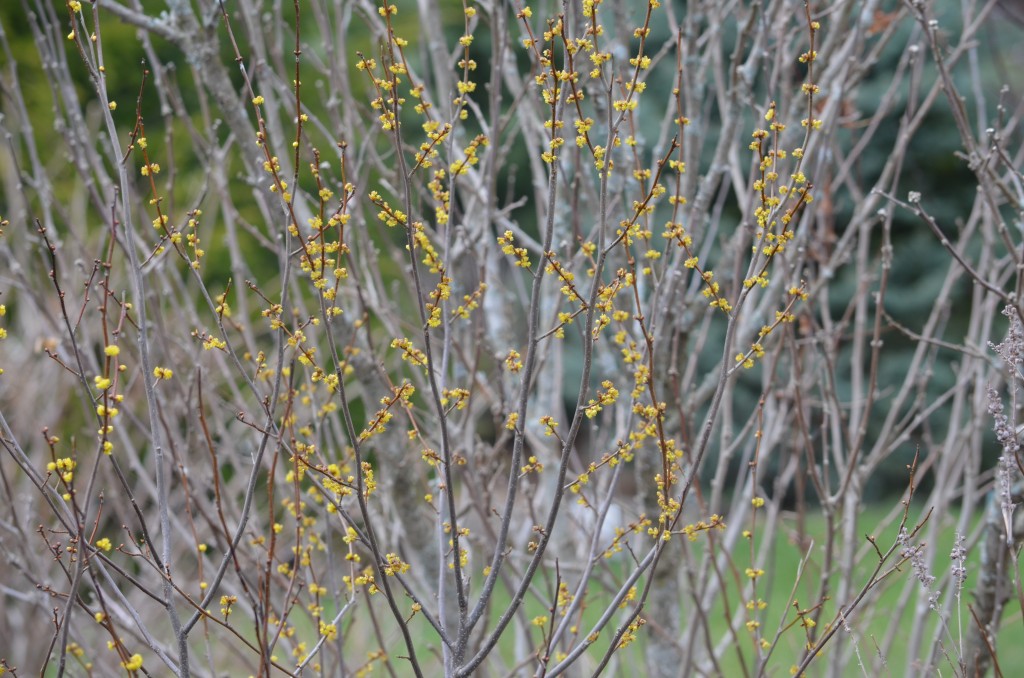At the end of the gardening season last year I spent a number of hours clearing brambles and cutting lower limbs of some of the trees out back to make one continuous path from the backyard through the wooded area and back out to the street on the opposite side of the yard. I also had to rake and level mounds of composted grass clippings and sod we dug out when making the flower beds.
After all the leveling and clearing Bill and I put down a deep layer of shredded leaves on the path to keep the weeds down , and now you can walk from one side of the yard to the other and when you step out onto the sidewalk see a little garden area that has been there forever but never gets any attention because of it’s isolation.
Although the path makes me happy, it also presented the problem of deciding what to plant in the dry shady areas under the trees in the areas that now line the path.
Hmmmmm.
I have been pondering lots of solutions, and most of them bring me back to the same issue: the rabbits. Any plant left to fend for itself back there will certainly be foraged incessantly .Also, dry shade, or rather just shade gardening in general ,is way out of my league as far as plant knowledge. Of course I know what the horticulture writers suggest and what they show in books and magazines, but I have no direct experience with those plants and no way of knowing which of them Peter cottontail and company will be thrilled to have for dinner. A poor palnt decision could end up costly both in terms of work and money.
I considered epimediums, which up until last year were not browsed by the bunnies, but then late in the season the few I had were eaten to the ground.
I tried christmas ferns (polystichum acrostichoides) in an area near there before….instant bunny lunch.
Hucheras, a favorite rabbit snack. wouldn’t last a day.
Solomon’s seal (polygonatum) is not browsed by bunnies but the red lily leaf beetles eat it
Once I started considering plants I consider ugly and rangy like cottoneaster and mahonia I knew I was in trouble.
I asked around to some gardener friends ,and after a few opinions was considering hay scented ferns (which they will not eat and thrives in dry shade )even knowing full well how aggressive it is and in a year or two from now it will have invaded my whole yard and I will curse the day I invited it here .
Then in a moment that in my mind’s eye I saw as a giant light bulb appearing over my head, it occurred to me that the answer was right here in my backyard all along: geranium macrorrhizum.
Geranium macrorrhizum ‘Bevan’s Variety or Bigroot geranium ,’ is a plant I have grown here for quite some time. It has fuzzy leaves that form a very dense mat of neat foliage and is a veritable weed- proof mat. The foliage is highly scented, but like what I can not explain. I neither like nor dislike the fragrance, but I think the bunnies have a firm aversion to it as never, not even once, has a leave been so much as nibbled. It spreads out in a very mannerly fashion and is easy to divide and transplant when you want another little colony of it. In the late spring it will be covered in sweet little pink flowers. In the fall the foliage turns color aging to a glowing red. The leaves also remains on the plant through the winter and it just needs a little ruff and fluff to be at it’s best come springtime.
The reason it never dawned on me that this would be the perfect plant for my new path is because everywhere I grow it here is in the full sun, but it will perform equally as well in shadier locations It is truly a very remarkable and adaptable plant ! As an added bonus I can use divisions from areas it already is growing here so it will be free!
It makes me a little sad that this oh-so-useful plant did not spring to mind immediately , and even more sad to realize that although many thousands of photos have been taken in this garden, I could only find one of this little workhorse plant. 




